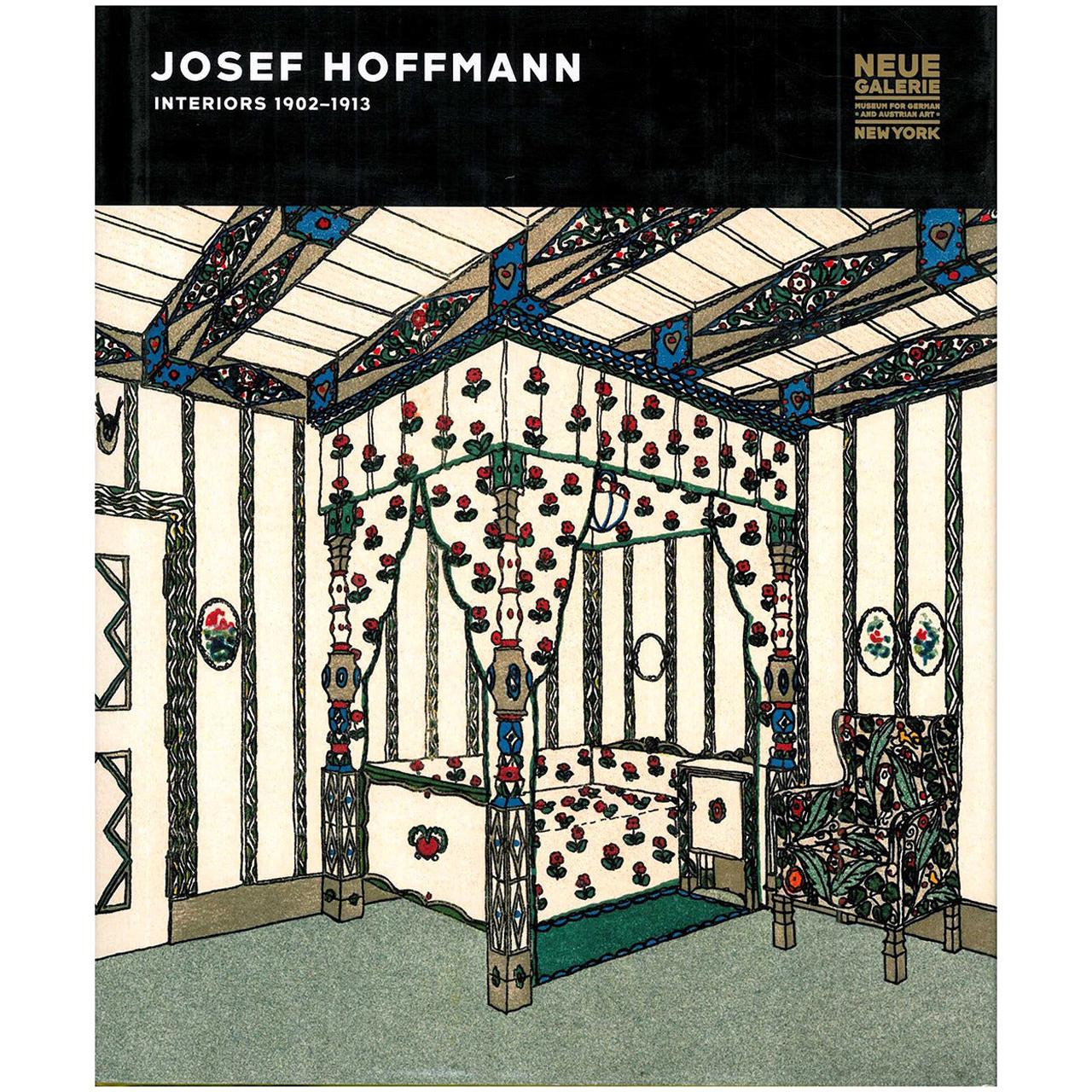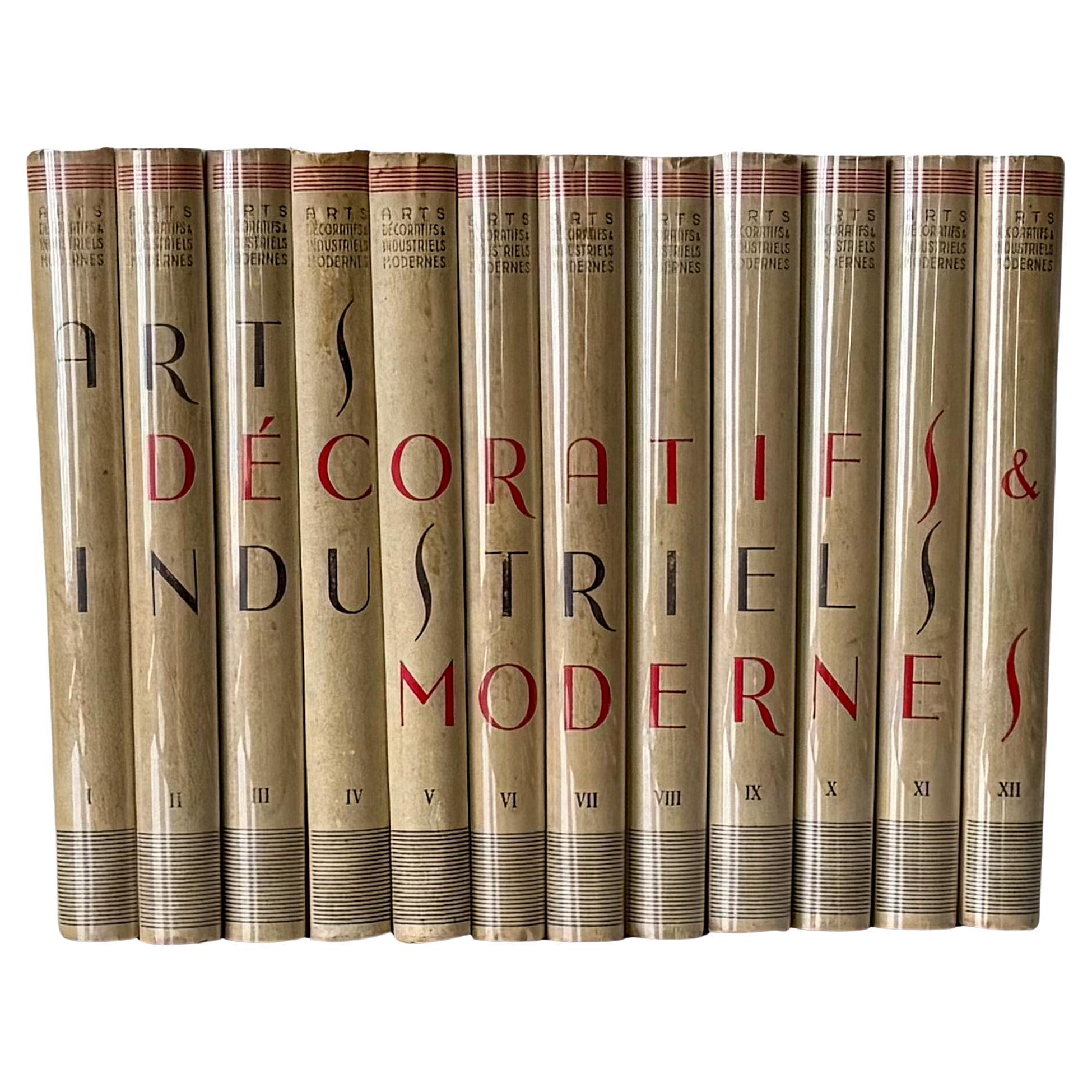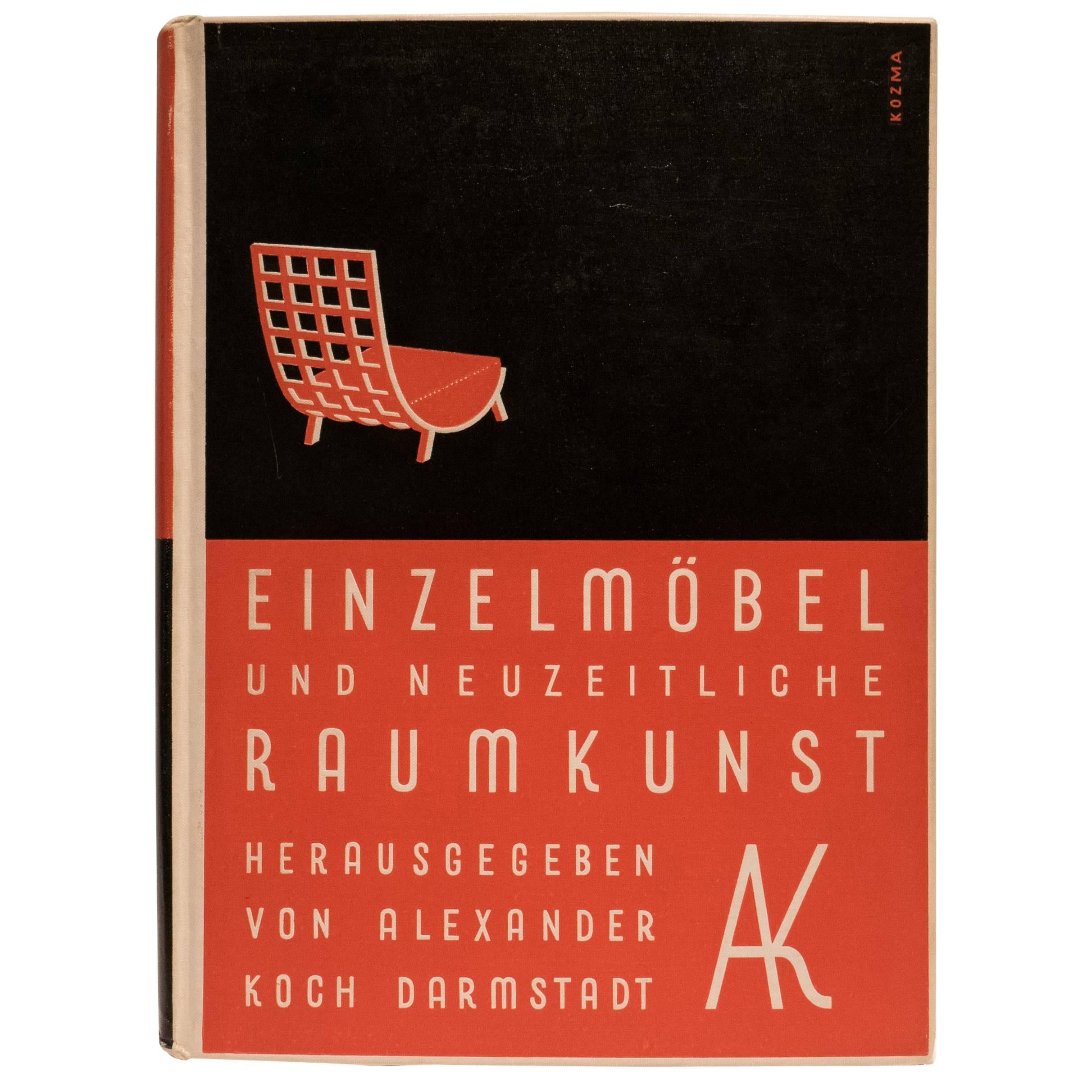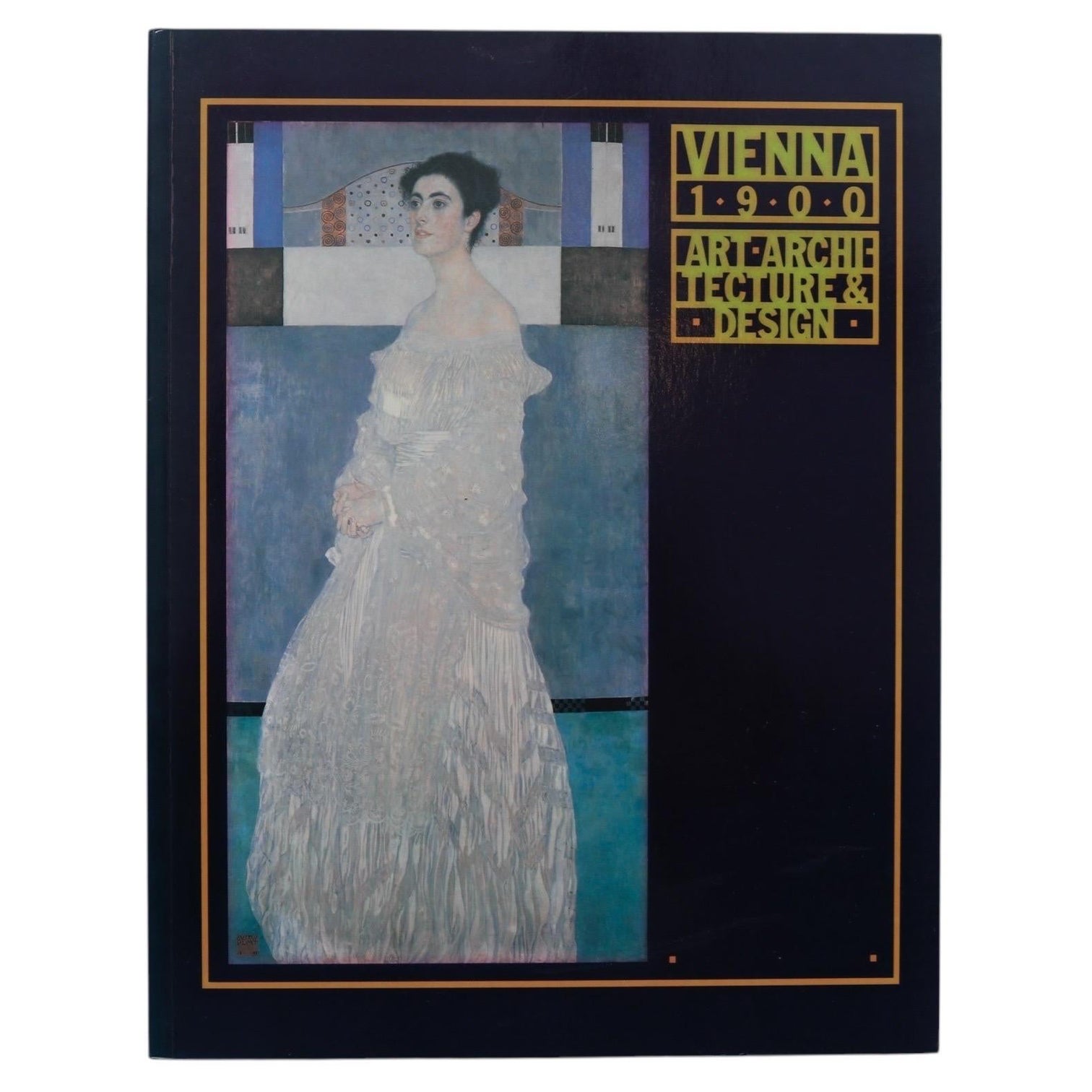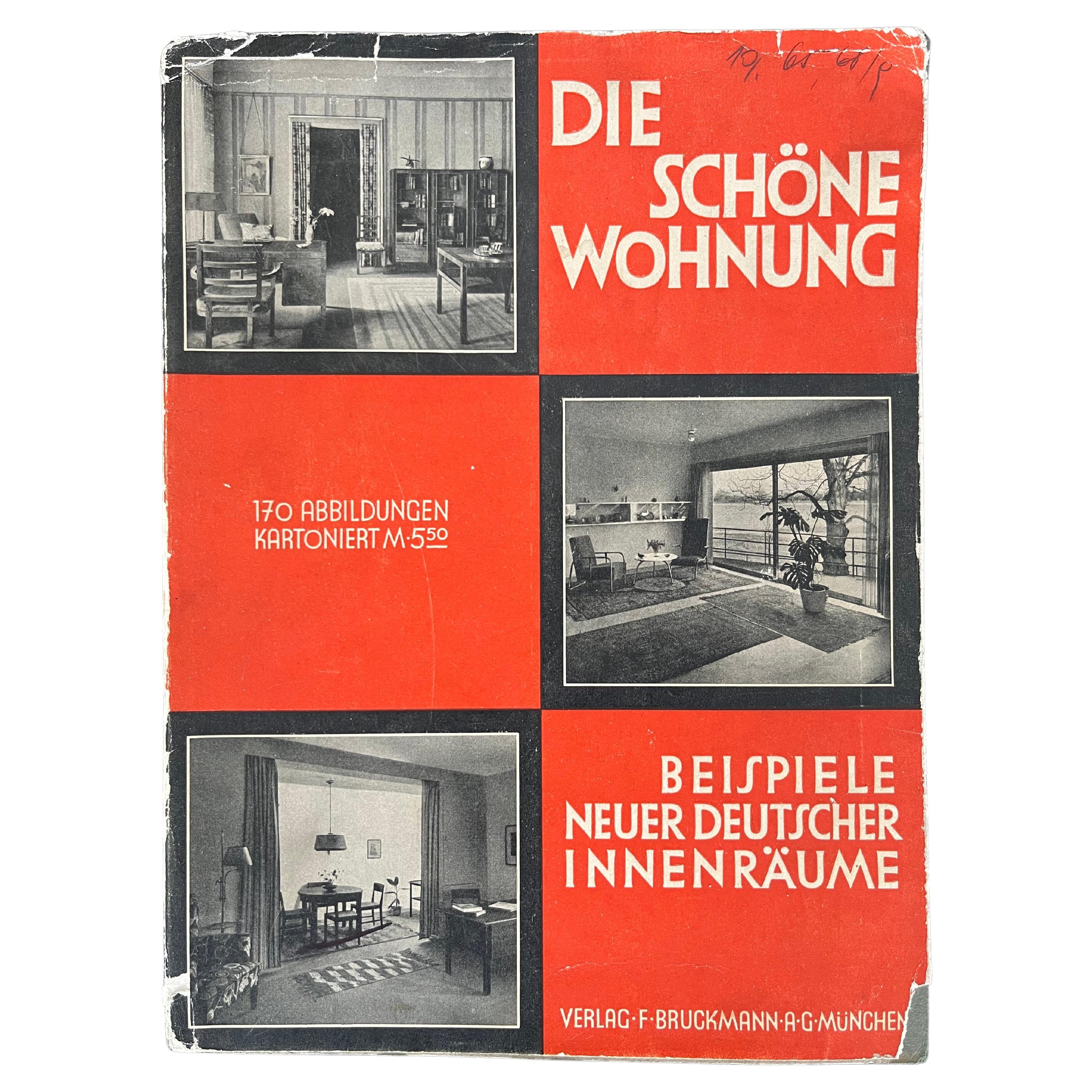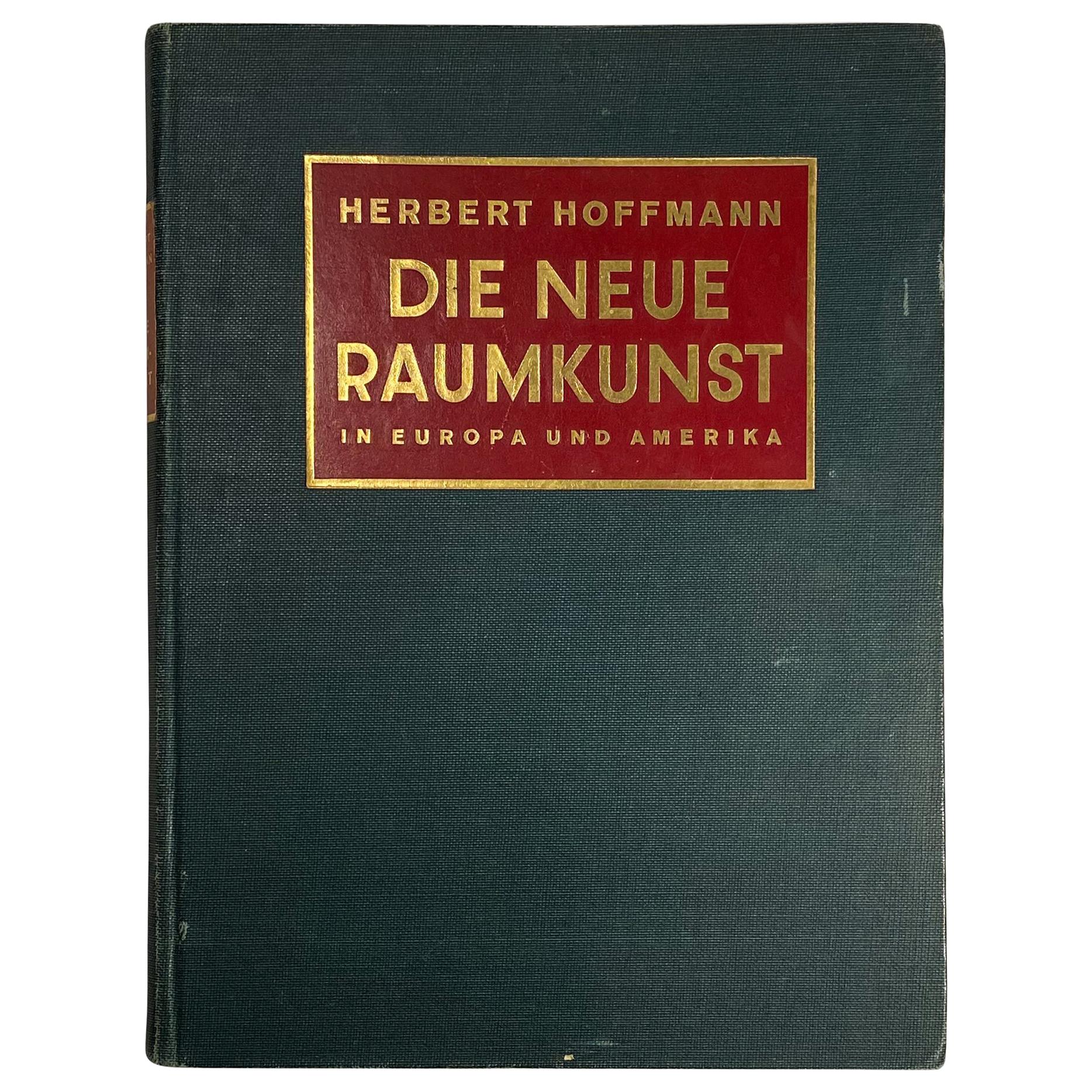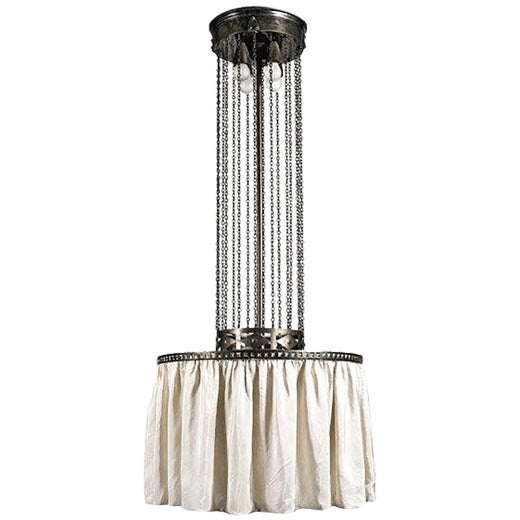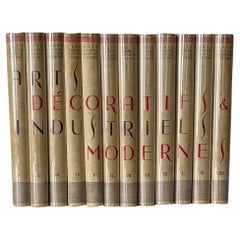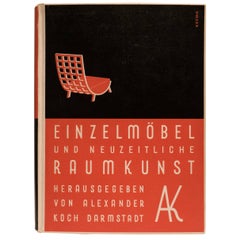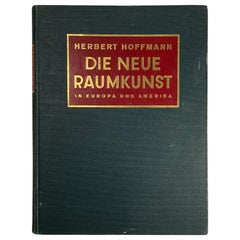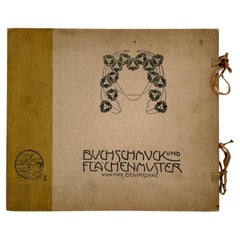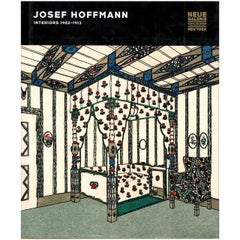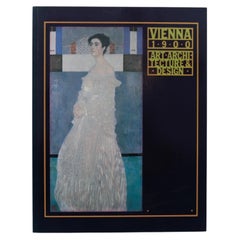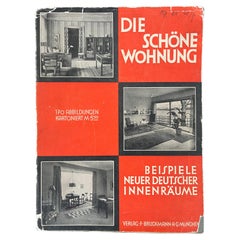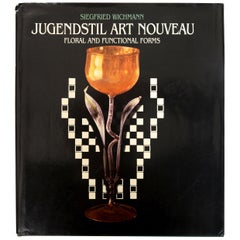"Austrian Applied Arts" Book
About the Item
- Creator:Josef Hoffmann (Author)
- Dimensions:Height: 7.25 in (18.42 cm)Width: 5.25 in (13.34 cm)Depth: 1 in (2.54 cm)
- Style:Vienna Secession (Of the Period)
- Materials and Techniques:
- Place of Origin:
- Period:
- Date of Manufacture:1930
- Condition:Wear consistent with age and use. Minor structural damages. Good overall condition with wear consistent with age and use. Some wear to the cloth boards and gilt lettering (see photos). Some bumping and bruising to lower edge.
- Seller Location:New York, NY
- Reference Number:1stDibs: LU82858353463
Josef Hoffmann
The Austrian architect Josef Hoffmann was a central figure in the evolution of modern design, and a leader in an aesthetic movement born in Europe in the late 19th century that rejected florid, extravagant ornamentation in favor of a new emphasis on simplicity of line.
As a founder of the Vienna Secession — a union of artists and designers determined to upend Austria’s artistic conservatism — and later, a founder of the turn-of-the-century Wiener Werkstätte (in English: the Viennese Workshops), a design cooperative that produced superbly crafted furniture and housewares, Hoffmann was a pioneering practitioner of what would become a fundamental principle of modernism: that good design is a way of life.
Hoffmann came of age amidst a shift in the culture of the applied arts, as a conservative order that looked only to the past for inspiration was pushed aside. But what, exactly, would replace that order was in question — and Hoffmann’s career embodies the developing patterns of design’s new spirit. His architectural work reflects his time as a student of the Vienna architect Otto Wagner, who disdained excessive decoration and employed new materials such as steel girders and reinforced concrete to create buildings with airy, open interiors full of light.
As a designer of furniture and interiors, Hoffmann was consistently open-minded about the aesthetics he explored. He was an early adherent of the flowing, organic forms of the Art Nouveau design movement that began to flourish in the late 1880s — but by the opening of the Wiener Werkstätte in 1903, Hoffmann’s designs embraced the beauty of geometry in pieces that feature grids and angular forms.
Hoffmann’s greatest works reflect his ability to combine seemingly conflicting design visions into coherent wholes. His architectural masterpiece, the Stoclet Palace in Brussels, has an exterior that groups together simple geometric forms and spacious interiors marked by subtly naturalistic design details that lend rooms an air of charm and geniality.
Hoffmann’s signature furniture design is an adjustable lounge chair — the Sitzmaschine (1905) — that marries a curving frame with square and rectangular back- and side rests. This piece, like so many others by Hoffmann, reflects a groundbreaking, forward-thinking appreciation for the union of different looks and sources that marks the best of interior design in our own day. Moreover, items offered on 1stDibs — which range from enameled silver jewelry, to silver flower vase baskets and other decorative objects, to sofas, lighting pendants and sconces — testify to the astonishing breadth of Hoffman’s creative pursuits. He was truly a giant of design.
- ShippingRetrieving quote...Shipping from: New York, NY
- Return Policy
More From This Seller
View AllVintage 1920s French Art Deco Books
Paper
Vintage 1930s German Art Deco Books
Paper
Vintage 1930s German Art Deco Books
Paper
Antique Early 1900s Austrian Vienna Secession Books
Paper
Vintage 1920s French Art Deco Books
Paper
Antique Early 1900s French Art Nouveau Books
Paper
You May Also Like
Early 20th Century Books
Paper
Vintage 1980s American Books
Paper
Vintage 1930s Bauhaus Books
Paper
Vintage 1980s American Books
Paper
20th Century Books
Paper
Contents and sections:
Introduction
Vienna 1900
Secession
The Beginnings
The First Exhibition
The Dedication of the House: Second Exhibition
Ver Sacrum III–VI Exhibitions
The ‘Klimt Affair’ – The University Paintings
Exhibitions 1900–1902
Beethoven 1902
XVI–XVIII Exhibitions, 1903
The Split within the Secession
Architecture and the Applied Arts
The Ringstrasse and the Architecture of Historicisim
Otto Wagner, 1841–1918
Joseph Maria Olbrich, 1867–1908
Josef Hoffmann, 1870–1956
The Wiener Werkstätte
Palais Stoclet – The Stoclet Frieze
Kabarett Fledermaus
Alfred Roller, 1864–1935
Hoffmann’s Later Work
Adolf Loos, 1870–1933
Kunstschau 1908 – 1909: The Early Work of Kokoschka and Schiele
Kunstschau 1908
Oskar Kokoschka, 1886–1980
Richard Gerstl, 1883–1908
Kunstschau 1909 – Vienna before the War...
21st Century and Contemporary Chinese Books
Paper
